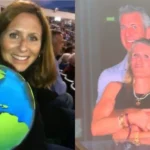- Profession: Freedom Fighter
- The Husband Rustom Cama
- Death Date 13/08/1936
The Lesser-known Information About Bhikaiji Cama
- Bhikaiji Cama was an Indian freedom fighter. She was considered to be the first one who lowered the Flag of Indian Independence at Stuttgart, Germany on 22 August 1907. She is also referred to by the name of “Mother of the Indian Revolution.”
- The parents of Bhikaiji Cama were part of the well-known Parsi family in Bombay. She and her husband Rustom Cama was part of a wealthy family. He was the son of K. R. Cama was also a Parsi scholar and an Indian freedom fighter.
- In the month of September, of 1896 the plague struck Bombay city. It was later declared to be the Bombay disease through the British government in India. Bhikaiji Cama was a volunteer nurse and helped the patients suffering from the plague. In the course of this work she was also afflicted with the illness that put her weak physically. Then, she traveled to Europe following the advice of doctors to seek additional treatment.
- Six years later, Bhikaiji Cama decided to stay in London and moved to London in 1902. Bhikaiji Cama came in contact with Dadabhai Naoroji in London. He was an activist for freedom and revolution that was fighting to secure the Independence of India in England. He was the head in the British Committee of the Indian National Congress. Inspired by his patriotic beliefs, Bhikaiji Cama joined the Indian National Congress where she began her work as an assistant to Dadabhai Naoroji. After becoming a part of the British Committee of Indian National Congress in England she was able to begin giving public speeches in Hyde Park in London. Hyde Park with Lala Har Dayal and Shyamji Krishna Varma, who also fought for India’s independence from foreign land. Lala Har Dayal, Dadabhai Naoroji, Shyamji Krishnavarma
- Shyamji Krishna Varma established an organization called The Indian Home Rule Society in February 1905. The group was with Bhikaiji Cama Dadabhai Naoroji and Singh Rewabhai Rana. In the following months after, the British government gave her a order to be removed from London due to her ongoing involvement in anti-British activity. The police also gave her an opportunity of being allowed to remain in London under the condition of not being involved in anti-colonial actions. However, she declined the offer and emigrated to Paris. In France she established her own organization called the Paris Indian Society with other Indian freedom fighters, including S. R. Rana and Munchershah Burjorji Godrej.
- Bhikaiji Cama wrote a variety of books, including Bande Mataram (based on the open Vande Mataram) and Madan Talwar (written following the death of Indian free-spirited activist Madan Lal Dhingra) that were based on Indian revolutionary independence movement during her exile within the Netherlands as well as Switzerland. She secretly sold her writings to India and she was able to use the French colony at Pondicherry assisted her in successfully distribute the books.
- On the 22nd August 1907 Bhikaiji Cama was a participant in the second Socialist Congress meeting at Stuttgart, Germany as the Indian National Congress party member. There, she demanded equal human rights for the poor in India who were victims of the devastating famine that was affecting people living in the Indian subcontinent. Following the gathering she unfurled her Flag of Indian Independence and was the first person to have did this on foreign land. The flag erected by Bhikaiji Cama in Germany was altered by her, with the assistance by Vinayak Damodar Savarkar that resembled the Indian flag. Madam Cama as she unfurls the Indian Flag at Stuttgart, GermanyMadam Cama disbanding the Indian Flag at Stuttgart, Germany As she unfurled the Indian flag at the event She appealed to supporters of freedom to support the fight of Indian freedom fighters and to support the independence of the Indian flag. She added, Look, the national flag for independent India is created! It is sacred through the blood of the young Indians who laid down their lives for its cause. In honor of our flag, we call on people who cherish freedom across the globe to support this fight.” She added that she It is the national flag for an independent India. I ask everyone to stand and raise this flag.”
- In the course of the struggle for Indian independence from foreign soil, Secretary of State for India Sir William Hutt Wyllie incarcerated his revolutionary Indian freedom activist Vinayak Damodar Savarkar in 1909. In 1910 in 1910, the British Government issued a warning to exile Savarkar to India via the maritime route. Savarkar fled from the police custody at Marseilles harbor in France. He was advised to stay with Cama and other people at the shore by his secret accomplices. But Cama was not there when he arrived at the spot and Savarkar was arrested again by French police. Savarkar could not talk to the police while inside the prison without the assistance of Cama. Therefore Cama was the reason why the French police sent a an order to Cama to surrender her when she was in charge of the missionaries. Cama did not accept the policies that were set by her French government. As a part of her French authorities, Britishers seized all the assets belonging to Bhikaiji of England. In the following days, she was given a mandate from authorities of the French government to be removed from France. In the same period, Vladimir Lenin, a Russian politician and revolutionary was invited by Bhikaiji Cama to join the Soviet Union for shelter that she refused.
- Bhikaiji Cama was fascinated by the gender equality movements started by Christabel Pankhurst as well as Christabel Pankhurst and the Suffragette movements. She traveled to Egypt to attend a public gathering in Cairo and spoke out on gender equality concerns. She asked the population,
I can see the representation of only half of the people of Egypt. Do you know where is another half? Sons of Egypt Where do the girls of Egypt? Where are your mother and sister? Do you have wives and daughters?” - The Berlin Committee was renamed ‘The Indian Independence Committee’ in 1915. After receiving Indian recognition the committee granted approval for the Indian Flag that was released in 1907 by Bhikaiji on 19 July, 1907.
- Through the Entente Cordiale agreement The United Kingdom and the French Republic began supporting one another in World War I in 1914. The missionaries affiliated with Paris India Society Paris India Society started leaving France. But, Bhikaiji Cama, and Singh Rewabhai Rana weren’t ready to quit their work too in the near future. She hid at Rana’s wife’s home in Arcachon in the event that she was ordered to quit the country. In the meantime, Cama and Rana were recommended from Jean Longuet, a supporter who was a supporter, for them to become M.P. Tirumal Acharya , a suffragan in Spain. Then, Cama and Rana were arrested by French police in the month of October 1914 as they took part in an initiative by the Punjab regiment within Marseilles to protest against colonial regime in India. The following year, however, the French Republic forced Rana and his family members to leave France to Martinique, the Caribbean Island of Martinique. Then, Bhikaiji Cama was also detained in the hands of French. While serving a sentence in France her health began to decline and she was released from the remainder of her sentence in the month of November 1917, on an agreement that she be present weekly at the police station in the area.
- The year 1920 was the time that Bhikaiji Cama was introduced to two Parsi women who were named Herabai as well as Mithan Tata, who had been fighting the cause of voting rights for women. After having a conversation with these females, Bhikaiji commented,
Be a part of the struggle for autonomy and liberty. If India is fully independent, women will not just be granted an opportunity to exercise their right of vote as well as all others rights.” - Bhikaiji Cama lived in exile until 1935 in Europe. In the time of her exile she was plagued by an illness that caused acute paralysis. The worsening health of her condition prompted her to send a letter to the British Government from Paris. On the 24th of June, 1935 she sent a letter in a letter to the British government via Sir Cowasji Jehangir and assured them that she would not take part in any agitation in the near future. She also asked the government to return her to India. Bhikaiji Cama left Paris in November 1935. The following year she passed away in the Parsi hospital in Bombay due to a prolonged illness.
- Avabai’s Petit Orphanage that was for females changed to Bai Avabai Framji Petit Girls High School, in Mumbai following the death
- After the demise of Bhikaiji Cama her personal possessions and assets were transferred to an trust called Avabai Petit Orphanage for girls living in Bombay. This orphanage was later named Bai Avabai Framji Petit Girls’ High School in Mumbai and was transformed to a girls’ school. Her family was given the sum of Rs. 54000 from her money treasury.
- Later, a variety of roads and streets located in Bombay were named in honor of the sacrifices made by Bhikaiji Cama in India’s fight to gain independence.
- On January 26, 1962, a stamp for postal mail with a value of 15 Paise was issued through the Indian government. India as part of the Indian Posts and Telegraphs Department on the 11th Republic Day of India. Bhikaiji Cama on Indian Postal Stamp
- In 1977 in 1977, the Indian Coast Guard commission released a rapid patrol ship the ICGS Bikhaiji Cama’, named after Bhikaiji Cama’s name. Bhikaiji Cama in honor of her sacrifices.
- An official building was built after the name of Bhikaiji Cama in South Delhi that were provided for the big Indian government and private offices such as EPFO (www.epfindia.gov.in), Jindal Group, SAIL, GAIL, and EIL.
- A husband and father of Bhikaiji Cama, ‘Rustom is a British admirer. Bhikaiji was an avid nationalist and participant in the struggle for a change in British control in India. Rustom is a British lawyer with an affectionate relationship with the British. Bhikaji was a proponent of the view that Britishers took advantage of India through the years. However, her husband believed that Britishers helped a great deal in the development of Indian states. The two views of the British have led Bhikaiji to engage in philanthropic and social work initiatives.
- The raising of the Indian flag over foreign soil was an inspirational moment for many contemporary American and African writers and novelists. The novel, ‘Dark Prince has been composed by W. E. B. Du Bois in 1928. In 2016 a book was released in the name of one of the Indian writer Racana Bhola Yamini, titled “The Life and Times of Madam Bhikaji Cama’ that focuses on the life of Bhikaiji Cama and her contribution to the freedom of India. In the publication, Racana mentioned the aura of Bhikaiji Cama. She wrote:
When they noticed Madam Cama dressed in an Parsi saree, with a full-sleeved blouse, with an attractive face, they began to talk in whispers. The head of Madam Cama was covered by the end of her saree and showed her respect however, when the professional and well-educated Indian woman stood up to speak in the most fluent style it appeared like the whole assembly was on the spot with a blaze. As it was announced that the Union Jack was about to be raised to mark the hoisting of the flag of nationality of India the country, she resisted it and pulled out a small tricolour from her purse and raised it with her hands. In this way, Madam, Cama became the first Indian to fly the National Flag on foreign soil. The event attracted lots of attention from the world.” - The “Flag of Independence of India” was raised by Bhikaiji Cama during the International Socialist Conference in Stuttgart, Germany. The flag was composed of yellow, green, and red colours , which were laid out in three rows. The colors represented the different religions of India like the Green color was a symbol to the Islam religion, while yellow represented the Hindu religion, and the red color is a symbol of the Buddhism the religion of India. The lotuses were on the upper row , in a the green color. These lotuses represent each of eight states belonging to the British government in India. On the third row in yellow, Vande Mataram was written in Devanagri spirit. Vande Mataram is “[WeBow to Mother India.” The final row the sun as well as moon, which was designed to symbolize both the Islam as well as Hinduism religious traditions of India. The image is of Indian Flag unfurled by Bhikaiji Cama
- The flag was later displayed in the Maratha and Kesari Library in Pune as an article of historical significance to the general public by the Indian government. India.
- In her exile, Bhikaiji Cama travelled to several countries across Europe in order to collect missionaries in order to fight British ruling in India. She also met with Indians who resided throughout France as well as Holland to garner their support. It is reported that the Britishers barred the entry of her into India due to her revolutionary background and the patriotic spirit.
 Skip to content
Skip to content










